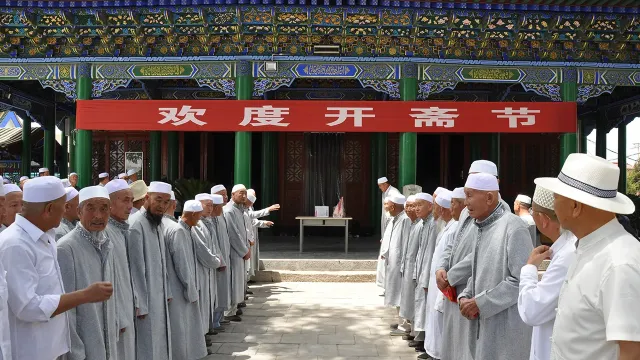 Muslims in China: A Summary
Muslims in China: A Summary
Muslims in China represent a significant and diverse part of the country’s population. Despite being a minority in a predominantly Han Chinese society, Chinese Muslims have a long and complex history within the country. Their experience is shaped by ethnicity, geography, and government policies, leading to varying levels of religious freedom and state control.
- Demographics and Ethnic Groups
China is home to an estimated 25-30 million Muslims, making up about 1.7-2% of the total population. The two main Muslim ethnic groups in China are the Hui and the Uyghurs, though there are other smaller groups.
Hui Muslims: The largest Muslim group, the Hui, are ethnically Han Chinese but practice Islam. They are spread throughout China, particularly in Ningxia Hui Autonomous Region, Gansu, Yunnan, and Xinjiang. The Hui have largely integrated into Chinese society, speaking Mandarin and adopting many aspects of Han Chinese culture.
Uyghur Muslims: The Uyghurs are a Turkic ethnic group primarily living in the Xinjiang Uyghur Autonomous Region in northwest China. They have a distinct cultural, linguistic, and religious identity, and their ties to Islam are deeply rooted in their ethnic heritage. Uyghurs, unlike Hui, speak Uyghur, a Turkic language, and have closer cultural links to Central Asia.
- Historical Context
Islam has been present in China for over a millennium, with initial contacts occurring through the Silk Road trade routes. The spread of Islam in China began during the Tang and Song dynasties and became more pronounced during the Yuan dynasty (13th century) when Muslims held prominent positions in Chinese society.
Over time, Muslim communities, particularly the Hui, assimilated into Chinese culture while maintaining their Islamic faith. The Uyghurs, however, retained a stronger cultural and religious distinction from Han Chinese society, due to their geographical isolation in Xinjiang and their ethnic ties to Central Asia.
- Religious Practices and Freedom
The practice of Islam varies between regions and ethnic groups. Hui Muslims generally face fewer restrictions from the Chinese government compared to the Uyghurs, and Hui mosques are prevalent across China, particularly in cities like Xi’an and Beijing. The Hui enjoy greater freedom to practice Islam, and their religious practices are often less scrutinized by the state.
In Xinjiang, where the majority of Uyghur Muslims live, religious freedom is severely restricted. The government has imposed strict controls on religious practices, including limits on religious education, bans on wearing the veil or growing beards, and tight surveillance on mosques. Authorities have conducted mass detentions of Uyghurs, with estimates of over a million Uyghurs and other Muslims being held in “re-education” camps, where they are subjected to forced assimilation and indoctrination programs.
- Government Policies and Repression
Hui Muslims: The Hui, despite being Muslim, generally enjoy more favorable treatment from the Chinese government compared to other Muslim groups. This is partly due to their cultural integration and use of the Mandarin language. While the Chinese Communist Party maintains control over religious institutions, Hui Muslims are less likely to face the harsh crackdowns seen in other regions.
Uyghur Muslims: The Uyghurs have been the primary target of China’s security measures and repression. The Chinese government has described its policies in Xinjiang as efforts to combat extremism, but human rights organizations accuse the government of conducting a campaign of cultural genocide. These measures include mass detentions, surveillance, forced labor, and efforts to suppress Uyghur language, culture, and Islamic practices.
- Economic and Social Challenges
Hui Muslims: Hui communities are spread throughout China and have largely integrated into the country’s economic and social life. Many Hui engage in business, particularly in the halal food industry, and generally experience fewer economic challenges compared to other minority groups. However, like other rural populations, Hui Muslims in some regions face issues related to poverty and underdevelopment.
Uyghur Muslims: The Uyghurs face significant economic marginalization, particularly in Xinjiang, where development projects often favor Han Chinese migrants over the local Uyghur population. The government’s emphasis on economic development in Xinjiang has resulted in demographic shifts, with large numbers of Han Chinese moving to the region, further marginalizing Uyghurs in terms of employment and access to resources.
- Cultural Identity and Assimilation
Hui Muslims: Over centuries, the Hui have managed to maintain their Islamic identity while adopting many aspects of Han Chinese culture. They speak Mandarin and have culturally blended into Chinese society. As a result, the Hui often do not face the same level of cultural repression as other Muslim groups.
Uyghur Muslims: Uyghurs have retained a distinct cultural identity, characterized by their language, Islamic faith, and Central Asian heritage. The Chinese government’s policies in Xinjiang have sought to weaken this identity through campaigns against religious and cultural expressions. Mosques have been demolished or repurposed, and Uyghur-language schools have been replaced by Mandarin-only education. This cultural suppression is a central element of the tension between the Uyghurs and the Chinese state.
- International Reactions and Human Rights Concerns
The situation of Muslims in China, particularly the Uyghurs, has drawn significant international condemnation. Human rights groups and international organizations have accused China of committing human rights abuses in Xinjiang, including forced detentions, forced sterilizations, surveillance, and torture. Several countries have imposed sanctions on Chinese officials and entities involved in the repression of Uyghurs.
The Chinese government denies allegations of human rights abuses and defends its policies in Xinjiang as necessary for maintaining stability and countering terrorism. However, the global outcry, particularly from Western governments, continues to grow, with calls for investigations and accountability.
Conclusion:
Muslims in China, particularly the Hui and Uyghurs, have distinct experiences shaped by their ethnic and regional identities. While Hui Muslims generally enjoy more integration and religious freedom, Uyghur Muslims in Xinjiang face severe repression and efforts by the Chinese government to assimilate them into Han Chinese culture. The situation of Uyghur Muslims has become an international human rights concern, drawing attention to China’s policies and their impact on the cultural and religious identity of the Uyghur people.